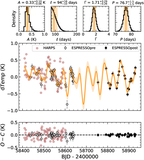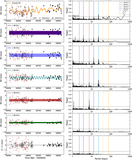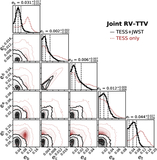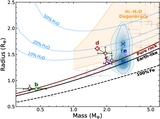Image Details
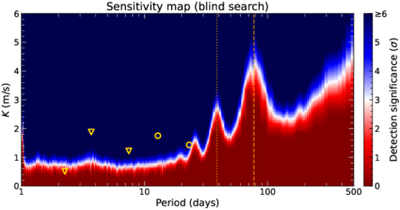
Caption: Figure C1.
Detection sensitivity map of Keplerian signals in the ESPRESSO and HARPS data. The semiamplitudes of L 98-59 b–f are depicted with inverted triangles for transiting and circles for nontransiting planets. The detection significance is calculated from the false-alarm probability in a Lomb–Scargle periodogram, corresponding to a blind search for periodic signals in a data set. Orange dashed and dotted vertical lines highlight the stellar rotational period (Prot) and its first harmonic (Prot/2). Our activity modeling with a quasiperiodic GP suppresses small injected signals (K ≈ 1–2 m s−1) at long periods and close to the stellar rotation period and harmonics. The ESPRESSO and HARPS RVs are sensitive to planets c–f in a blind search, and to planet b in an informed search using the period and phase constrained by transit.
Copyright and Terms & Conditions
© 2025. The Author(s). Published by the American Astronomical Society.




